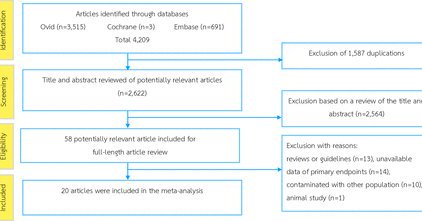
armyemdoc
@armyemdoc
Followers
5K
Following
5K
Media
1K
Statuses
4K
Steve Schauer, DO, MS 👨🏻⚕️🚑 🪖| PGY15 | EM-tensivist | US Army | C2RASH Lab Director | (my opinions only, not medical advice)
Joined January 2021
Read the story 👇 It's so often that those of us who work in EM and critical care see devastating injuries and wonder whether we're really making a difference... SPC Jordan Kirkpatrick is a @usarmy Soldier who was riding his motorcycle on his day off when he had a high-speed
6
39
259
Does BCVI represent a modifiable or non-modifiable risk factor for stroke? We looked at almost 54,000 cases of BCVI in TQIP... the bottom line is that every which way we sliced and diced it, anticoagulation and antiplatlet therapy had no effect on the occurrence of stroke.
0
0
1
For those of you that routinely intubate critically ill patients, will the RSI trial results change your practice? -No difference for in-hospital mortality -Greater cardiovascular instability with ketamine https://t.co/x4dTi3phpu
#emergency #emergencymedicine #criticalcare
0
1
2
@armyemdoc @fisherad1 Did you see this recent paper in @TSACO_AAST about Calcium and trauma? “Association between hypocalcemia and mortality in trauma patients: a systematic review and meta-analysis” https://t.co/AvDKyOUbQo
tsaco.bmj.com
Background The trauma triad of death, consisting of hypothermia, acidosis, and coagulopathy, has long been recognized as a major cause of mortality in trauma patients. Recently, hypocalcemia has...
1
10
16
Happy Thanksgiving! 🦃 To all my colleagues and friends working today, make sure you get your charts properly coded. #turkey #thanksgiving #holiday #emergency #emergencymedicine #criticalcare #icu #science #data #research #army #armymedicine #trauma
0
3
6
The ALIFAST protocol randomized 157 patients in Morocco who were to a FAST exam on arrival versus no FAST exam. The FAST exams were performed by EM physicians, all of whom attended a standardized training course. Early FAST was associated with: -Lower in-hospital mortality (39%
3
8
26
A study published last week calls into question (sorta), whether hypocalcemia should be added to the lethal triad and make it the lethal diamond. In this study, they specifically assessed hypercalcemia in the setting of multiple blood transfusions for hemorrhagic shock. In
2
5
27
A video review of 25 cricothyrotomies performed at a very busy academic center found: -The median time from arrival to cric was 24 hours -The fastest was 44 seconds and the longest 685 seconds -24 of them use the open surgical (scalpel, hook, bougie) technique -22 of the 25 were
4
11
40
"I found more meaning in my work when I stopped treating “cases” and started seeing people. Compassionate attention became my most effective clinical tool."-Dr. Dimitri Tito @RichSchaeferMD @MelDMann @armyemdoc @DMS_SurgGen @JosephHsuMD #MedTwitter
https://t.co/6WJxAy24PB
closler.org
By Dimitri Tito, DO, Johns Hopkins Medicine During my first year of practice, I met a 59-year-old patient, the same age as my mother, with one of the most complex medical histories I’d ever seen....
0
4
4
Can personalizing septic shock care with a capillary refill time improve outcomes? In this well-designed RCT, the short answer was yes -- it did improve outcomes. This great because the monitoring method can be done anywhere and is virtually free (other than a few minutes of
0
15
49
The BICARICU-2 study came out today. In this study, they found no difference in 90 day mortality between those that received a bicarb infusion (n=314) and those that did not (n=313). The intervention was 4.2% bicarb targeting a pH >7.30 with a max of 1000mL in the first 24h
3
14
62
A recent systematic review with meta-analysis looked at steroids for vasopressor refractory shock in sepsis. Of the 18 RCTs with almost 8000 patients, they found a 4% absolute reduction in mortality with moderate dose steroids (200-300 mg/day hydrocort equivalence) with a risk
2
4
12
Coworker: "What's that smell?" Me: "Sorry, I was doing some enteral exhalation."
0
0
2
A recent systematic review with meta-analysis of 6 RCTs found that in neonates undergoing emergency intubation, VL was superior to DL for first-pass success with a NNT of 6. This is particularly helpful for those of us that do not routinely intubate neonates but may, on rare
1
25
73
Despite decades of blanket use of epinephrine in cardiac arrest with only marginal benefit, at best, in select populations, ILCOR continues to protect this sacred cow. One thing is clear, epinephrine increases ROSC and hospital admission rates... What is not clear is if it
0
2
3
Ever wondered where the critical threshold is for HBG where the lack of oxygen delivery secondary to anemia will cause a lactate elevation? It is around 5g/dL. The best available is from a study in 1998. In this study, they performed isovolemic reductions in HGB in healthy
0
1
9
A recent systematic review with meta-analysis comparing CPAP versus HFNC found... -CPAP is better than HFNC -No mortality difference (7494 patients, 18 RCTs) -Reduced need for invasive mechanical ventilation (5900 patients, 22 studies, mix of interventional versus observational
0
4
5
Happy ER nurses week... ...to all the nurses that can accurately dose pediatric meds in one room, get into a fight with a dude high on meth in the next room, and still have the patience to not go off on me when I order blood cultures 10 minutes after you put an IV in.
1
12
39
The military is when people you haven’t seen in years message you saying they are in town for one day only, and you drop everything to go and see them. You can’t buy that type of friendship.
56
70
1K





